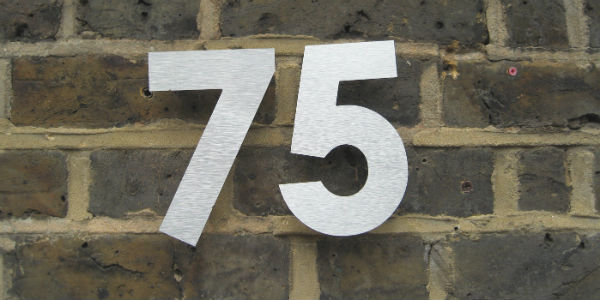75 more votes in the right places – that’s all the Conservatives would have needed to govern alone
If just 75 people in the right constituencies had voted differently in the 2017 General Election, Theresa May would now have a working majority in the Commons. Chris Terry (Electoral Reform Society) examines some of the more extraordinary anomalies thrown up by the first-past-the-post system this year. In North East Fife the SNP beat the Lib Dems by just two votes, but under the ‘winner takes all’ system all the Lib Dem votes in the constituency were wasted ones. Similarly, Labour lost out because it piled up votes in areas where it was already certain to win. He argues for an electoral system in which every vote carries equal weight.

Photo: duncan c via a CC-BY-NC 2.0 licence
Britain’s first-past-the-post (FPTP) electoral system (in)famously results in marginal and safe seats where many votes are considered ‘wasted’ – but the 2017 General Election has shown just what random results that can throw up. The existence of such seats is a feature of a FPTP electoral system, not a bug. FPTP is meant to function so that there are two sets of safe seats for each of the main parties – and as the pendulum swings from one party to another, the marginal seats switch from one party to another. The party winning the majority of seats then forms the government.
But this results in major democratic issues. It means that, for instance, election battles become concentrated on a smaller number of voters. These areas and voters are targeted relentlessly and often become the battleground of the election. In turn, these swing seats see a huge amount of tactical voting based on who might beat the ‘greater of two evils’. We estimate that six and a half million people ‘held their nose’ on June 8. With one in five voters trying to second-guess each other, we are left with a ‘lottery election’ where casting a ballot is like casting a die.
Partly as a result, this election saw the second highest electoral volatility (the movement of votes between parties) since 1931. People are switching sides and shopping around at astonishing levels, as they try and game the system. That’s a context which makes it hard for parties to ‘target’ accurately. This election, they got their targeting wrong – and hence the ‘true battlegrounds’ were not where they thought they were.
Attention has been lavished on surprising gains, but less noticed has been the consolidation of some safe seats into ultra-safe seats – places such as Liverpool Walton, where the Labour majority is 77%, Birmingham Ladywood with a Labour majority of 69.5% or East Ham where it is 70.5%. Indeed, Labour now holds 34/35 of the safest seats, while the Conservatives hold none. This creates an inefficiency in the Labour vote. By piling up votes in safe seats, it is harder for the party to win a majority nationally. To win elections, it is best to win individual seats by small rather than large margins, and to lose by large ones: to do the opposite is inefficient, as it makes it more likely that a party will lose an election even if they win the most votes.
Although supermajorities of the size of Labour’s are less common for the Conservatives, some sizeable majorities still exist. Christchurch has a Conservative majority of 49.7%, South Holland and the Deepings 49.5% and Hampshire North East 48.2%.
While in many ways it may be satisfying for campaigners to achieve gigantic majorities in their home areas, once a party has achieved first place in a constituency under FPTP those extra votes do nothing to help secure more seats in the House of Commons. They are, put simply, wasted. Meanwhile, at the opposite end we have ultra-marginal seats. Eleven seats were won by fewer than 100 votes. The most marginal seat after the 2017 election is North East Fife, where the SNP beat the Lib Dems by a mere two votes. If one SNP voter had gone to the Lib Dems the seat would have tied, resulting in the drawing of lots. If two had gone to the Lib Dems then they would have won the seat – and yet the SNP will represent all of the voters in that seat until the next election.
At the same time, the Conservatives could have held Kensington if just 12 voters had changed their minds – that’s 100% of local power hinging on a dozen votes.
These bizarre binaries are much reduced under multi-member PR systems. Indeed, if 75 voters in the right seats had voted differently the Conservatives would have a working majority, meaning a deal with the DUP would have been unnecessary. Just 75 votes switching hands would have given the Conservatives a working majority, 533 votes switching hands would have given the Conservatives an absolute majority. 645 voters could have deprived the Conservatives of a majority with the DUP, depriving them of a deal.
These figures demonstrate the relatively tiny number of people who actively change election results in the UK. The importance of marginal campaigns is such that Professor Justin Fisher has said that the idea of a national campaign may, effectively, be dead, as national resources are spent almost entirely on supporting constituency level campaigns. In addition to this issue with the national campaign, an analysis of the local, constituency-based campaigns at the 2010 election was carried out by the Electoral Reform Society in 2013, finding that the difference in expenditure was 22 times as high in the constituency with the highest campaign spend per vote as it was in the lowest.
This practice means that people and areas can, rightly or wrongly, feel ignored – as many in Scotland felt before 2014. Two things hold: votes should count everywhere and hold equal value, and people should be represented equally regardless of where they happen to live. The case for these arguments is now stronger than ever.
This post represents the views of the author and not those of Democratic Audit.
 Chris Terry is a Research Officer at the Electoral Reform Society.
Chris Terry is a Research Officer at the Electoral Reform Society.
Read the ERS’ new report: The 2017 General Election: Volatile Voting – Random Results





 Democratic Audit's core funding is provided by the Joseph Rowntree Charitable Trust. Additional funding is provided by the London School of Economics.
Democratic Audit's core funding is provided by the Joseph Rowntree Charitable Trust. Additional funding is provided by the London School of Economics.
In an extreme version of this, the party of which I was formerly vice-chair, UKIP, obtained more votes in the 2015 General Election than the LibDems and SNP put together – outcome was 1 seat for UKIP and 64 for those others.
However, as a result of the rise of the party, its victory in the earlier European Elections in the UK, and the threat of it taking a large number of seats in 2015, the Government of the day offered a referendum on EU membership…and as a result, UKIP is a fair part of the way towards achieving its aim, even though that governing party from previous AND current Prime Minster down do not want to leave the EU. This all came about as a result of UKIP doing increasingly well in the first half of the second decade of the century, in all elections. Local, assembly, Westminster and of course European.
It could be argued that in some situations (pretty certainly in this one) winning 20 or 30 seats at Westminster is not as good as the fear you might take 60 or 70. We all know what happens to parties who take a wrong move in coalition and are identified with the worst aspects of the bigger party with whom they jump into bed.
The referendum process was stage managed by a government which had no intention whatever of campaigning for Leave, even in the total absence of anythin it could bring back by way of ‘re-negotiation’, hoping it could just terrify voters into not disobeying – this discounts any idea that the government was pursuing an agenda that it itself wanted. It wanted and needed the referendum like the proverbial hole in the head. It got both these things. And importantly UKIP with its just over one in nine of the vote spectacularly achieved the first stage of its aim.
As a minority party, did it need those 50 seats? Would it have achieved its aim in the way that it did? It is maybe not surprising that UKIP voters were by and large uneasy about reforms to the voting system when they too were put to referendum…even though these would have given them 60-odd seats instead of one
“Two things hold: votes should count everywhere and hold equal value, and people should be represented equally regardless of where they happen to live.”
Only some crazy dictator would disagree with that. So would the Conservative and Labour parties agree with that statement? Oh – so would they disagree? We need to know.